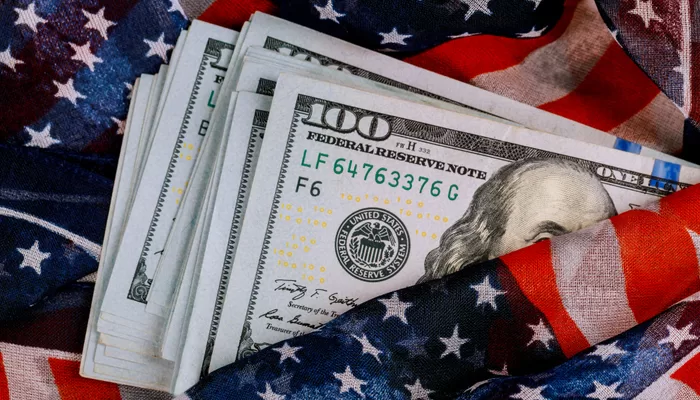Finance
USD Falling: Reality or Illusion?

This May turned out to be quite stressful for the USD: the currency kept falling while the world grew more optimistic, anticipating further growth. The speed of the vaccination campaign in the USA made us hope that the economy will get back in force soon. The PMI revived. In other words, stimulation turned out to be a salvation for the economy, and the effect is already visible. The dollar is heading down: as long as things are okay, demand for a safe-haven asset is shrinking.
Traditionally, however, the falling of the USD could be watched as a blockbuster: the greenback headed down as if without insurance; markets were growing fast, and talks about the dollar collapse could be heard everywhere.
Why did things go this way and when will the dollar stop falling? let us try to figure this out.
Too much attention to inflation
One thing that could stop the falling of the dollar is new interest towards American inflation. Some investors remain sure that the Federal Reserve System will have to react to inflation speeding up, whether it wants it or not. This can be reflected in some alterations of its interest rate policy. If a tiny change happens there, the dollar will momentarily react by an increase.
In April, one of the main economic indicators the Consumer Price Index reached 0.8% m/m (4.2% y/y), which was quite tangible. However, the comments of the Fed were unequivocal: inflation was growing due to the low base effect a year before, the growing of oil prices, and consumers getting more active. This is all temporary, hence, is not worth much attention.
Personal expenses in April are yet to be seen, but the results are likely to be calmer than in March. That month, people got money from the government, which has already been put into the economy, not avoiding inflation, of course.
The Fed will not change anything
The minutes of the latest Fed’s meeting, published in May, do not say that talks about a decrease in stimulation volume are impossible; however, this might happen only after the economy nears target levels. This somewhat calmed the market down after it got so worried about growing inflation.
In the minutes it is mentioned that a noticeable progress in the US economy will make the government think about a decrease in buying back bonds; nonetheless, this is not to happen preliminary. This is the opinion of some members of the Fed. As for the state of the market, the Fed is sure that in certain sectors of the economy, employment is growing less actively than before.
As for inflation, the global forecast has not changed. General inflation out of the USA had grown. This was due to a row of factors: from transferring the growth of commodity prices to the effect of point deflation getting weaker. Base inflation remains weak, the regulator states, seemingly comparing global issues.
Investors got exactly what they wanted from the document: the Fed clearly expressed its position about the stimulation and state of the economy. There is no need to look for more hints.
Stimulation: for good or bad?
In 2021, the US economy is recovering cheerfully: businesses are creating more and more workplaces, fight with the pandemic is as efficient and fast as possible, the government supports the systems and gives away large sums that get directly into the economy.
In Q1, 2021, according to two estimations, the US economy grew by 6.4% q/q. This is a brilliant result but without state support and the actions of the Fed this would not have happened for sure.
One reason for the decrease in the USD rate is exactly this system stimulation. The Fed annually buys back state bonds and mortgage papers for 120 billion USD, and these volumes are not to be decreased in the nearest future. The government has already poured 2 trillion USD into the economy and is planning new support measures.
This process of printing more money and pouring it into the economy is depressing the USD. The economy feels very good: the consumer is active, having extra finance. The labor market is expanding because cheap loans and all types of state support are available to businesses. Production has got back to normal because it sees final demand. Things are enthusiastic, as planned.
Without stimulation, the economy would not have come back to normal this easily. In this light, the weakness of the dollar might be interpreted as a side effect of efficient treatment, nothing else.
The USD: what is next?
The USD is, indeed, weak, this is no illusion. Moreover, it is fast in the long run. What is next?
Some say that the dollar will keep declining until 2023-2024, while all the stimuli remain in force. This is the reflection of the Fed’s soft credit and monetary policy and the high speed of the growth of the global GDP. Note that a whole load of US companies are making the most of their profit abroad, such as semiconductor-producing companies, tech and energy companies. In the companies, included in S&P 500 index, 28% of sales are made abroad. While the dollar is weak, companies are making more profit than they could. The US budget is only winning.
There are certain risks, such as increased taxation for transnational companies, according to the plan of Joe Biden’s, President. However, as long as there are no facts, it is hard to say. We may expect this plan to work for 50% of its potential. Then risks decline.
The weak phase of the USD will be lengthy, but is this bad for the global market? There must be too many emotions and speculations here. In fact, this is just a part of a global cycle.
By Dmitriy Gurkovskiy, Chief Analyst at RoboForex



















































